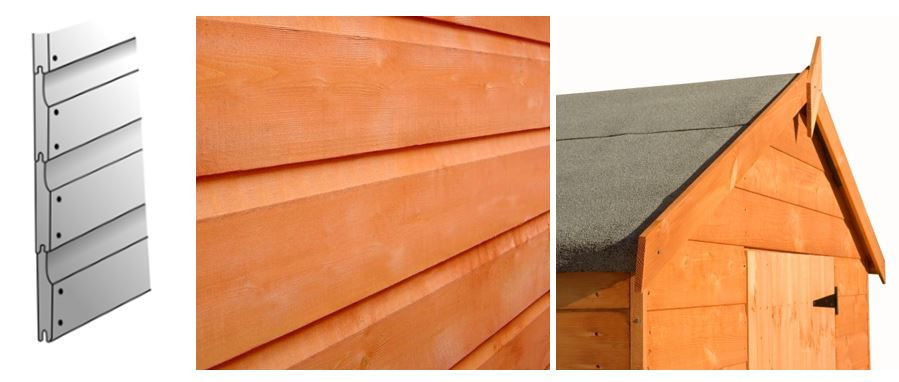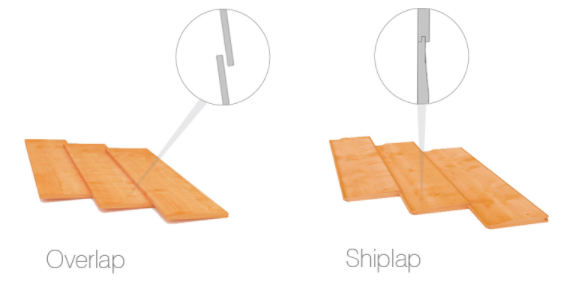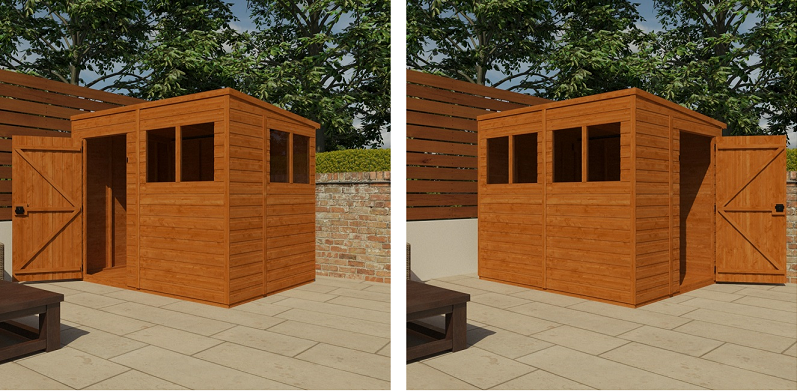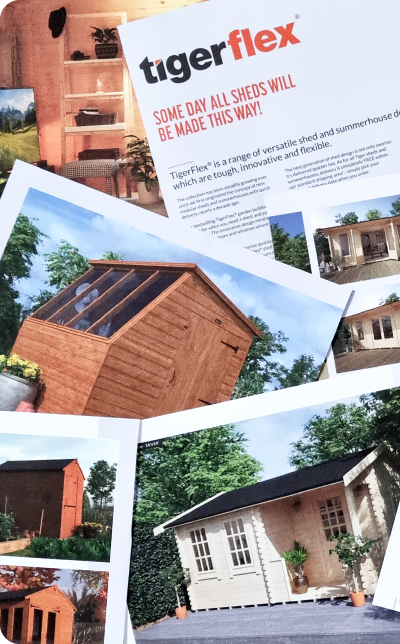What Is Tongue and Groove Cladding?
Published: 20/05/2021

In the search for a quality garden shed, you may have heard a lot about tongue and groove cladding for sheds. You may have also heard of shiplap, overlap sheds and more. That’s why you’re here – right? Perhaps you feel in the dark about how tongue and groove sheds differ from everything else. Or maybe you just want to know whether log cabins, sheds and summer houses with this type of cladding are worth your time and money. Well, you’re in luck. In this post, we aim to answer any questions you have. We start by explaining exactly what this type of cladding is. We'll then give you five reasons why you may wish to choose tongue and groove cladding for sheds over the alternatives. Note: For general information on cladding, go to our post on shed cladding. But for specific info on tongue and groove cladding, just keep reading...
What is tongue and groove cladding?
The term ‘cladding’ refers to a covering on the structure of a garden building – in this case timber boards. Tongue and groove is a type of joint in which one board features a groove (or slot) and another board features a tongue. The boards fit perfectly together vertically or horizontally – via interlocking ridges or hollows. You may have also heard about shiplap cladding for sheds. To be clear, shiplap is a type of tongue and groove cladding. 
Tongue & groove sheds vs overlap sheds
By contrast, overlap sheds are made from rough-cut cladding boards that overlap each other. These sheds boast classic designs, solid build quality and good value for money – making them the perfect choice if you’re on a limited budget. That said, overlap cladding is not as sought after. Find out why below:
5 Reasons why tongue and groove sheds are best
So, you may have heard manufacturers or even your neighbours brag about their tongue and groove summerhouses, sheds or log cabins. But what makes them so special? Let’s take a closer look…
1. Strong and stable
You remember we said that tongue and groove sheets (or boards) slot perfectly together? Well, we weren’t kidding! The tight, interlocking fit ensures there are no gaps in the structure – boosting the building’s integrity and making it stronger, more durable and longer lasting. In particular, shiplap cladding is a form of tongue and groove construction in which the wooden boards are 12mm thick (as opposed to 9mm overlap boards) – ensuring buildings with this type of construction are built to last for many years.
2. It withstands all weathers
Shiplap cladding comprises high-grade planed boards; the bottom board has a protruding ridge (or tongue), which locks into a matching groove (or slot) at the bottom. In other words, shiplap is an upgraded form of tongue and groove. As a result, the tight fit in shiplap tongue and groove cladding prevents penetration from wind and rain. But that’s not where it ends… Shiplap cladding features a profile at the top of each board – which means the boards curve inwards at the top. Why is this important? Because it allows rainwater to run off and prevents it from collecting between the tongue and groove. Because of their higher quality, tongue and groove sheds (and garden buildings in general) also tend to have better roofs and floors. This lies in stark contrast to the cheap OSB board found on many overlap sheds (Tiger being the exception here – we don’t use OSB ever!). As a result of the better floors and roofs, in addition to higher resistance to the elements, tongue and groove sheds are better insulated – and at any time of year, they’re much more pleasant to be inside.
3. Helps keep your possessions safe
Because tongue and groove sheds are stronger, they’re more secure – overlap boards are easier to prise open and more vulnerable to thieves. And because it's less likely to let in rain and wind than overlap buildings, tongue and groove cladding helps protect your possessions much more efficiently. Due to better shed insulation, your valued possessions stay free from damp, as well as extreme cold in winter and heat or humidity in summer.
4. It makes your garden look (even) better
Tongue and groove cladding also looks great – the seamless join between the boards creating a natural, yet sleek appearance. What’s more, you can paint it, stain it, or decorate it however you wish! As a result, it can improve the look of your underwhelming outside area or simply enhance a well-designed and attractive garden.
Why can't an overlap building achieve the same sleek look?
Take a look at the close-up photo of overlap cladding below.
Rough-cut overlap cladding[/caption] Overlap shed cladding is rough cut - meaning the manufacturer takes less care when machining the boards, which aren't as attractive as tongue and groove cladding for sheds. As a result of this rough cut, overlap sheds don't hold paint as well, or as evenly, either.
5. More suited to flexible designs
Tongue and groove cladding allows the perfect blend of flexibility, quality and strength. Its design is more intricate than overlap cladding. But because tongue and groove cladding fits together much like a jigsaw, it allows manufacturers to create modular panels made from high-quality timber.
Ideal: tongue and groove cladding for sheds
In particular, shiplap (an upgraded form of tongue and groove cladding) is ideal for the sides of a shed. Why? Both because of its sculpted shape (which looks great) and because of its added strength, which also makes it perfect for modular designs. This, in turn, allows unprecedented flexibility. For example, modular construction helps facilitate the innovative design of the TigerFlex® range. The sheds in this popular range allow you to choose where to put the windows and doors on your building. But these aren’t any old build-by-numbers sheds – they boast the same level of expert craftsmanship and high-grade timber you’d expect from a respected brand.
Pressure-treated options
While tongue and groove garden buildings tend to cost more than overlap sheds - there are many reasons they're worth the added expense. Besides the flexibility we describe above, another factor that sets tongue and groove log cabins, summerhouses and sheds apart is that they're available in a range of pressure-treated options. This process involves forcing premium wood preservatives deep into the timber fibres to make it resistant to weathering and pests. At Tiger, our higher-end buildings are pressure treated with Tanalith E, which protects the timber against all forms of decay and insect attack.
You’ll see and feel the superior quality
https://www.youtube.com/watch?v=NMTV2detSi0&t=11s Garden buildings with tongue and groove cladding tend to be made from high-quality timber. This ensures they stand apart from the low-grade OSB chipboard found on the cheap and nasty sheds which look terrible and tend to dip, warp and sag over time.
On the other hand, Tiger log cabins, sheds and summer houses are built to last.
To take advantage of our 20-year guarantee, click here.
















